60th Royal Americans
2nd - 4th Battalion
Members of the British Brigade and Burning of the Valleys Military Association
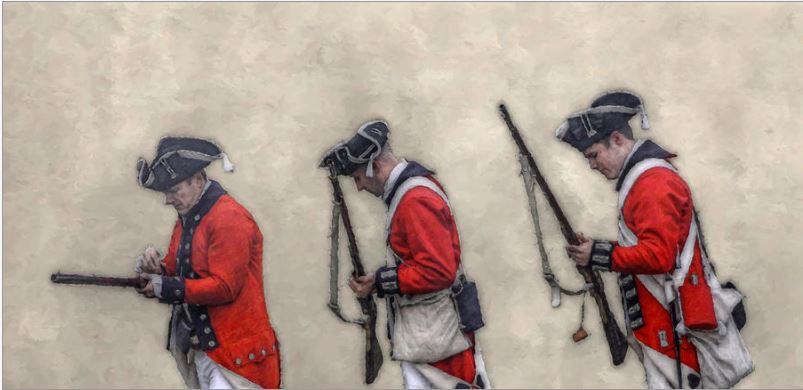
In 2003, a group of living history enthusiasts re-created the 2nd - 4th Battalion Royal Americans of the Revolutionary War period, an extention of the existing reenacting unit which was originally established in 1984 portraying the unit during Pontiac's Uprising and the French and Indian War era. The purpose of our organization is to accurately portray the Revolutionary War British 60th Royal Americans for the educational benefit and enjoyment of both the general public and ourselves in helping to preserve a portion of our country's past heritage.
Our 2nd - 4th Battalion company portrays both battalion and light infantry 60th, depending on the needs and setting of the events we attend. Our membership is from the Mighigan/Ohio regions and while smaller in number than some reenacting units, nonetheless, safety, historical accuracy, fun and camaraderie are our priorities. We are always looking for new members. Individuals with scincere interest in possibly joining our unit are invited to contact us for more information.
 60th Logo
60th Logo
Logo of the 60th Regiment.
 Original 60th Button
Original 60th Button
Original Rev War button found in St. Augustine, FL.
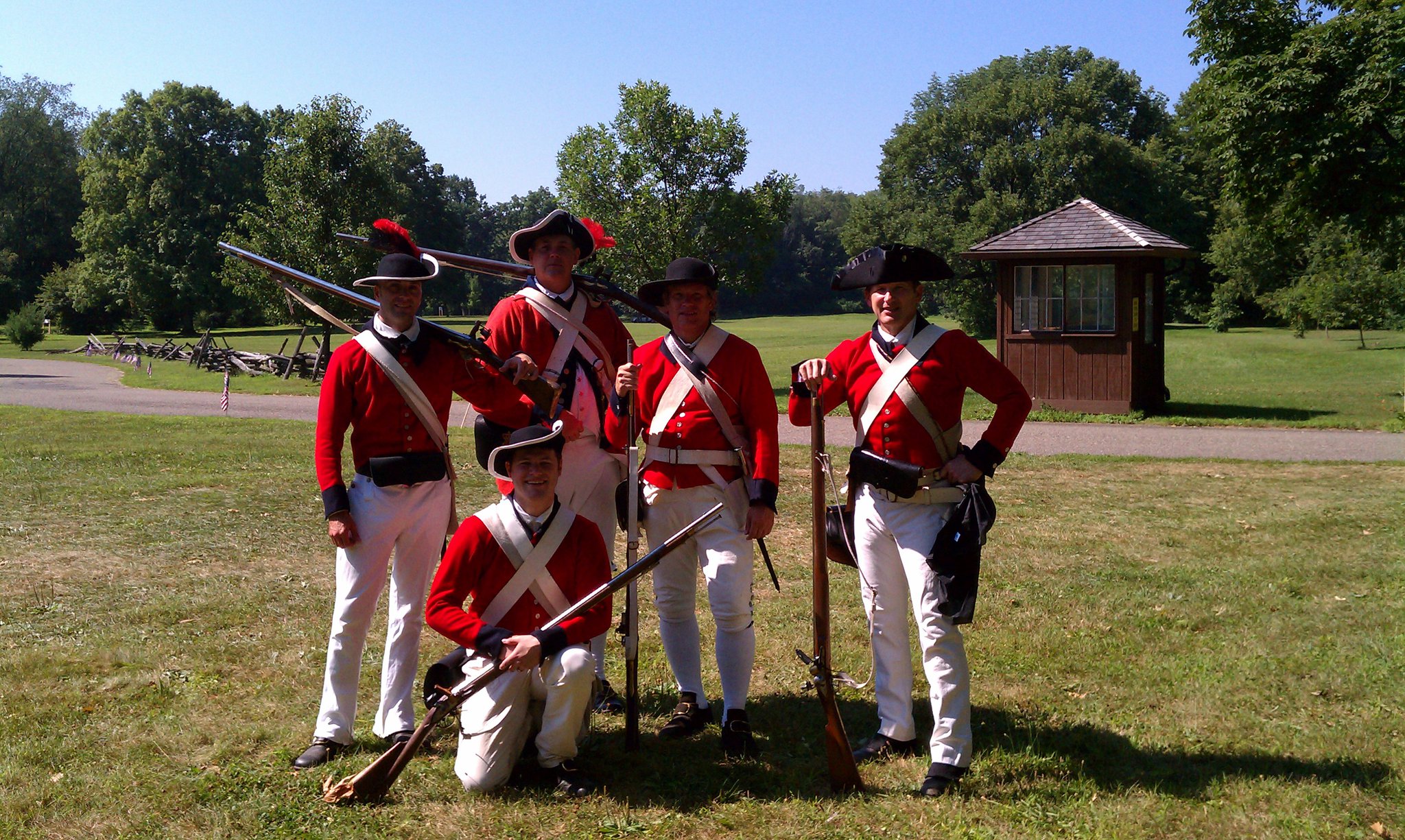
The 60th or Royal American Regiment of Foot was originally raised as a four battalion British infantry regiment in 1755-56 to meet the needs of forest warfare in North American at the onset of the French and Indian War. Proposed by Jacques Prevost, a Swiss soldier and adventurer (and friend of the Duke of Cumberland) and after receiving Royal accreditation, officers and soldiers were secured from both the American colonies and Europe, many of Swiss and German descent (including Frederick Haldimand, later Major General and Governor of Canada and Quebec Province during the American Revolution). The Royal Americans were to distinguish themselves as one of the best fighting units in the British Army throughout their subsequent service to the Crown. The various battalions were to play a major role in nearly every campaign of the French and Indian War (1755-63) and Pontiac’s Uprising (1763-64).
During the American Revolution, the various contingents of the 60th were involved in military actions both in the Southern campaigns in the American colonies and West Indies corridor, living up to the regiment’s motto “Celer et Audax” (Swift and Bold). In 1775-76, companies of the 2nd and 4th Battalions were in East Florida at St. Augustine, while others of the 2nd and 1st Battalions were in the Caribbean at Antigua and Jamaica respectively. By 1778-79, portions of the 2nd Battalion remained at St. Vincent Island in the Caribbean under Lt. Col. George Etherington; the 2nd, 3rd, and 4th Battalions served in Florida and Georgia under Colonel Augustine Prevost, his brother Lt. Col. James Mark Prevost, Lt. Col. Lewis Fuser, and Major Beamsley Glazier in actions at Brown’s Creek, Hulson Ford, Fort Morris/Sunbury, and the Siege of Savannah. In 1780, the 4th Battalion engaged at the Siege of Mobile, AL and Baton Rouge, LA with the 1st Battalion (amazingly) in an expedition at Fort St. Juan in Nicaragua under Lt. Col. (formerly Deputy Adjutant General) Stephen Kemble. Other portions of the 2nd Battalion at this time were in both Carolina/Georgia and West Florida at the Siege of Pensacola, remaining portions of the 2nd/3rd Battalions continued in garrison at St. Augustine, FL under now Lt. Col. Beamsley Glazier, while remnants of the 1st and 2nd Battalions were sent to New York City at this time (where, interestingly, there is documentation that some 60th officers were on assignment in espionage for the British through the end of the war).
Following the war, in 1784, the Light company/2nd Battalion was at Grenada and St. Vincent; eventually the 1st and 2nd Battalions were sent to Jamaica and Halifax in 1787. The 60th Regiment was much later designated as the King’s Royal Rifle Corps by the War of 1812; and today is known as the Royal Green Jackets.
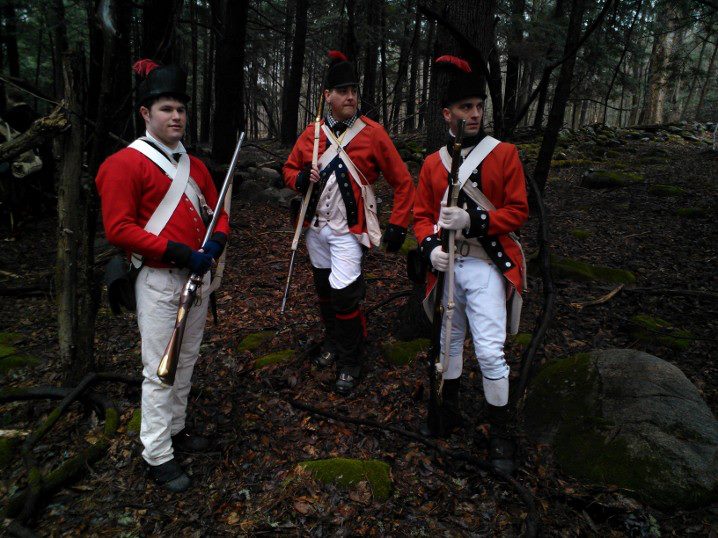 Light Infantry
Light Infantry
Light infantry portrayal at Herkimer Home in Herkimer Home, NY.
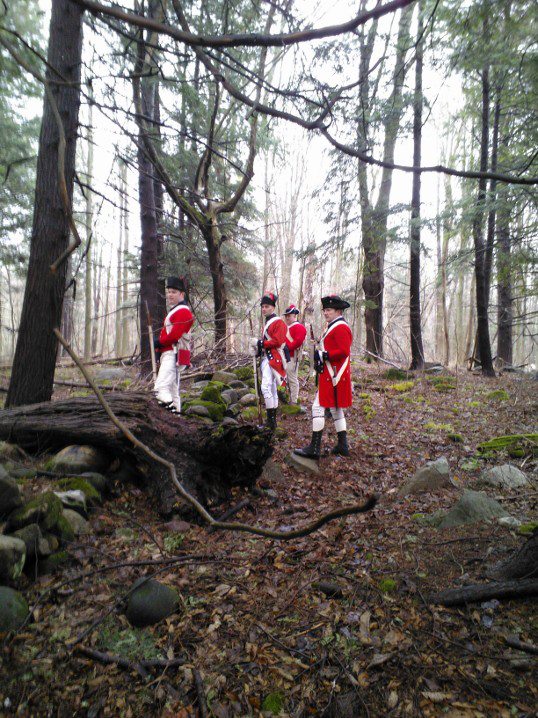 Light Infantry
Light Infantry
Light infantry portrayal at Herkimer Home in Herkimer Home, NY.
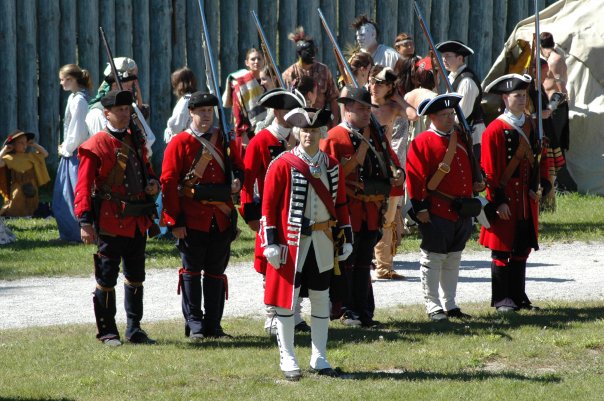 French and Indian War
French and Indian War
F&I Portrayal at Fort Michilimackinac, Mackinaw City, MI.
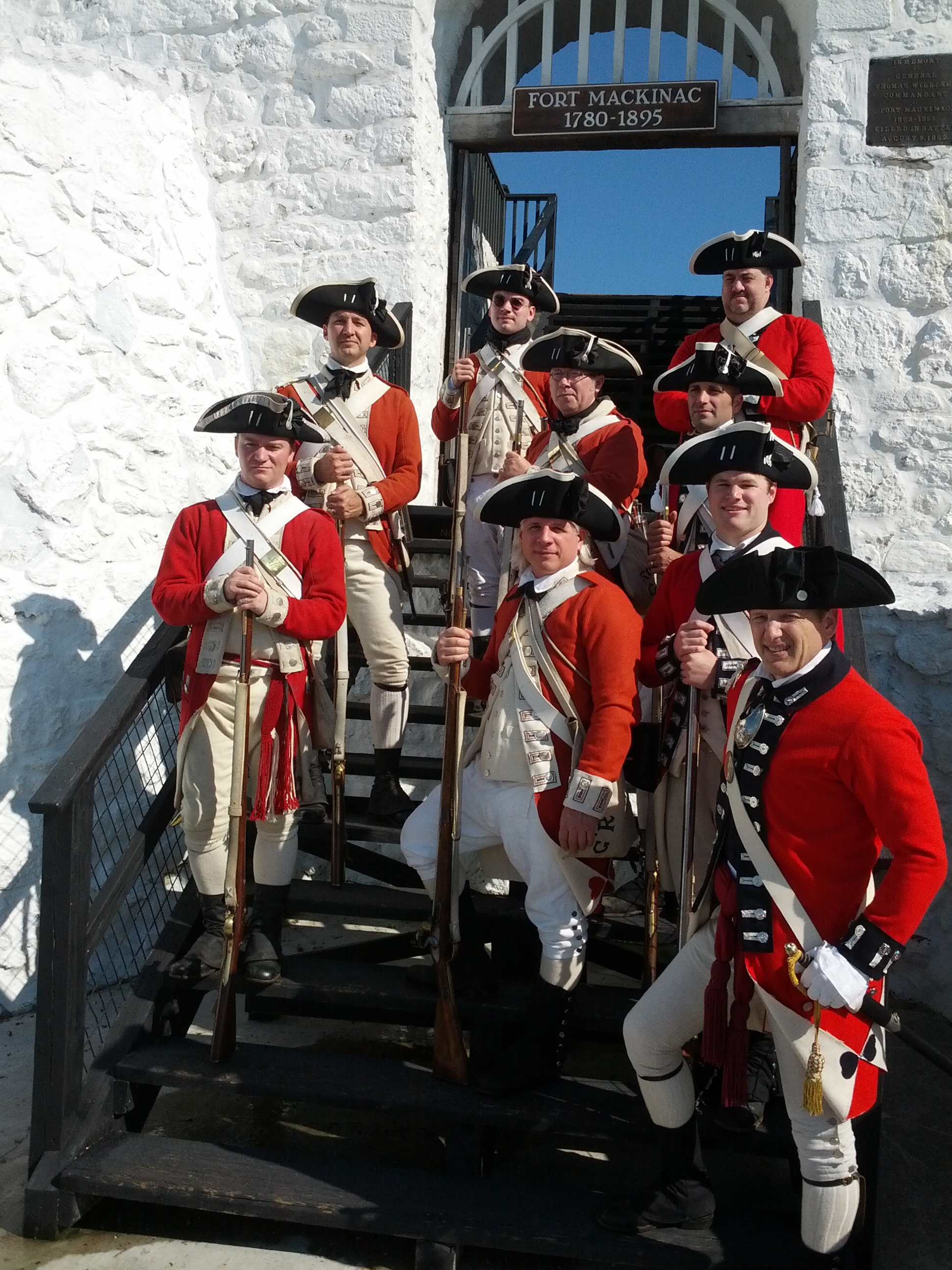 Fort Mackinac
Fort Mackinac
60th and 47th Regiments at Fort Mackinac.
 Fort Michilimackinac
Fort Michilimackinac
Soldiers wearing regimental coats at Fort Michilimackinac.
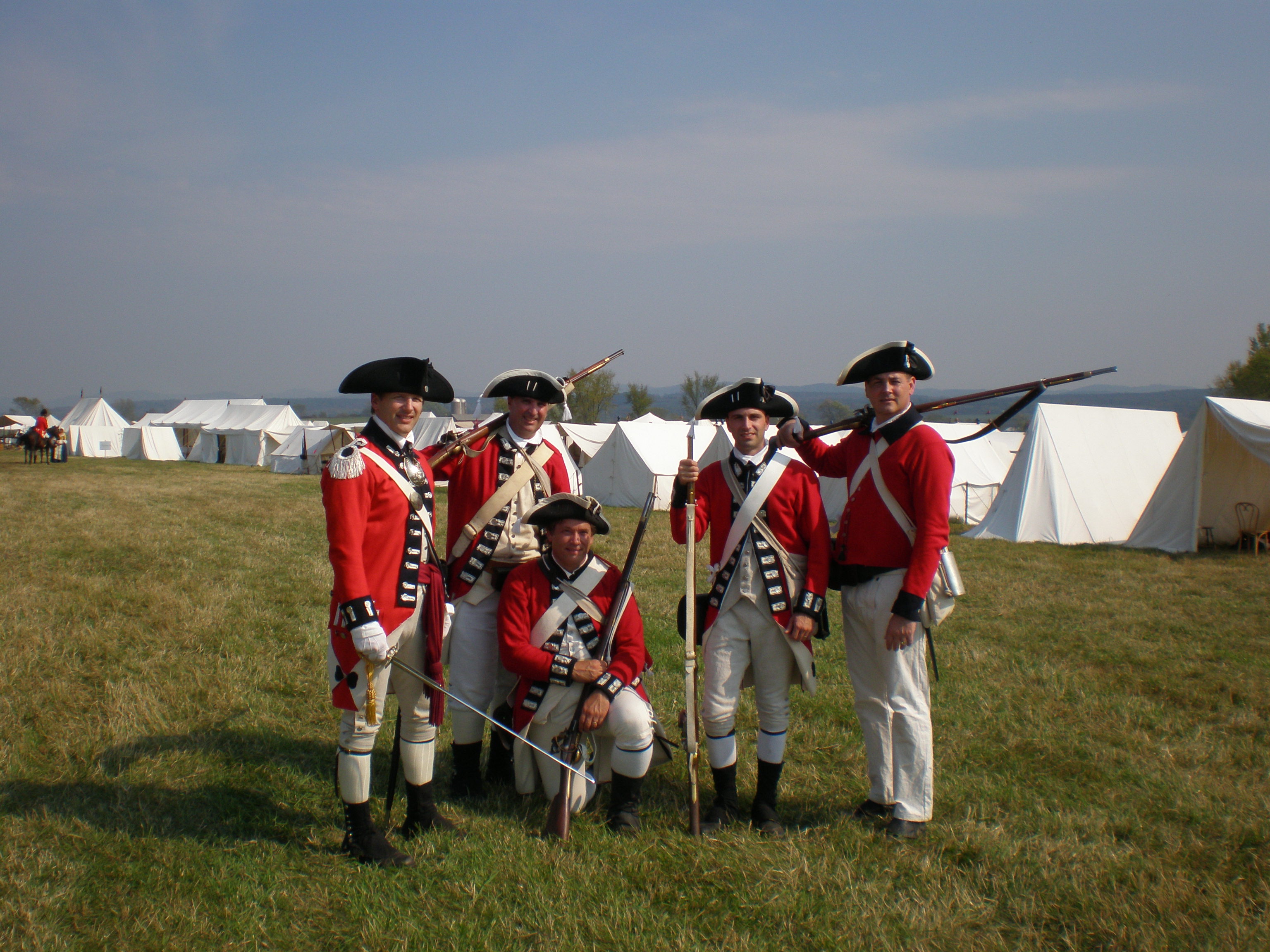 Saratoga
Saratoga
Rev War portrayal at the Battle of Saratoga.
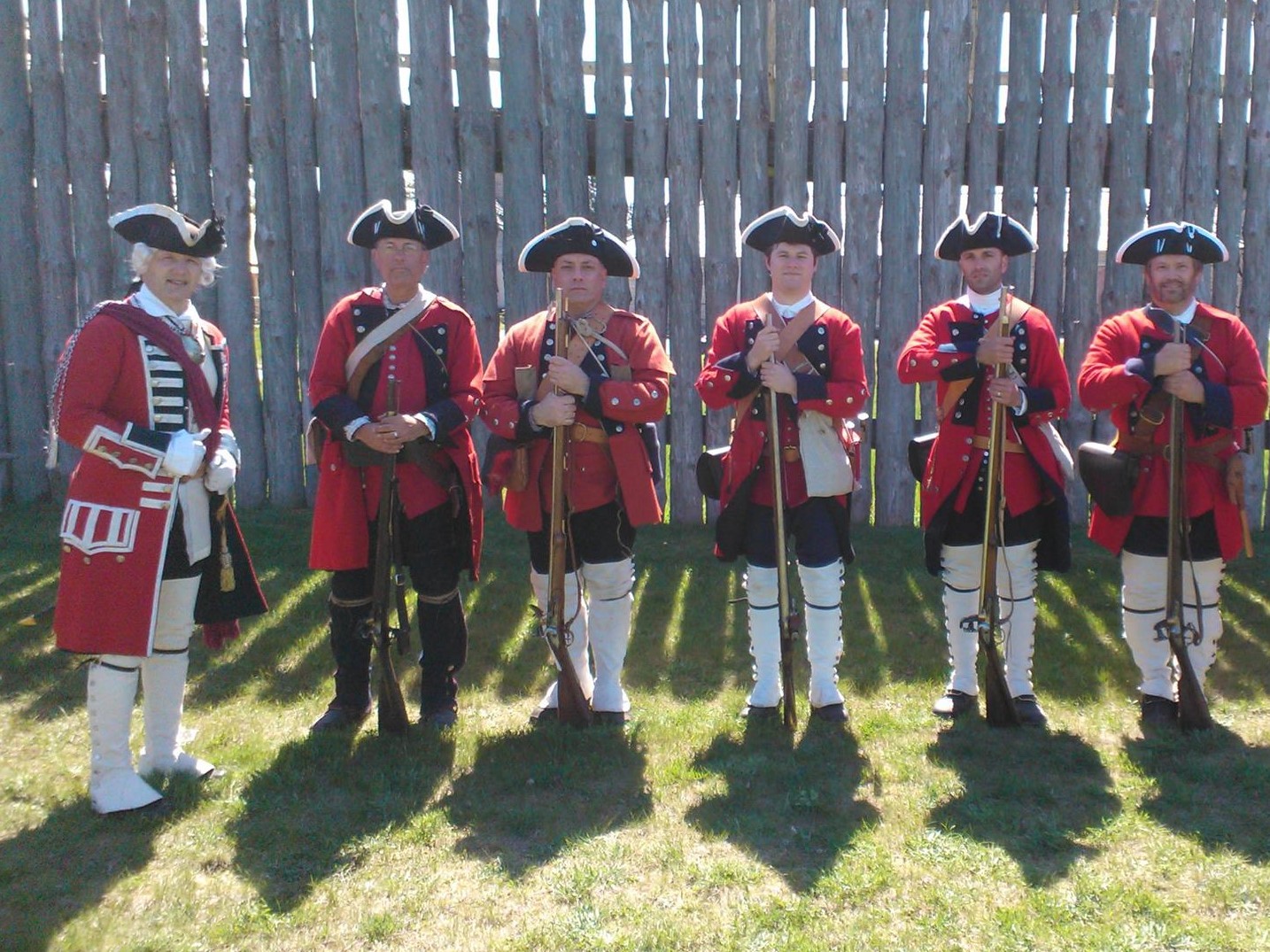
Over the years, we have found it best that new recruits for our 60th unit start out with a “Campaign” Uniform, which is less expensive than the full “Parade” Uniform, the latter which includes the laced regimental coat. So that you will not be wasting your money and time in obtaining the wrong items for our impression, we urge restraint in ordering items and therefore please ask us first for direction.
Black felt standard wool felt Round Hat
Black British Private Cocked Hat
Off-White cotton canvas 18th Century trousers
Off white wool socks (or heavier off white cotton)
White cotton 18th Century workshirt (no ruffles)
Black cotton cravat or neck cloth
Half-Length Spatterdashes (black)
Black 18th Century Shoes; buckles sold separate (plain square)
Long Land Pattern or Short Land Pattern or Light Infantry fusil www.loyalistarms.com Bayonet with scabbard also. NO INDIA MADE MUSKETS.
1771 transitional/F&I style cartridge box with white leather straps
Bayonet waistbelt, single or double frog (white leather)
Haversack assembled or kit. Kit is much less expensive and easy to use. www.najecki.com
Canteen, stainless steel or tin kidney shaped www.jas-townsend.com
If you have additional questions or are interested in joining the unit, please email [email protected] along with how best to get in touch with you.